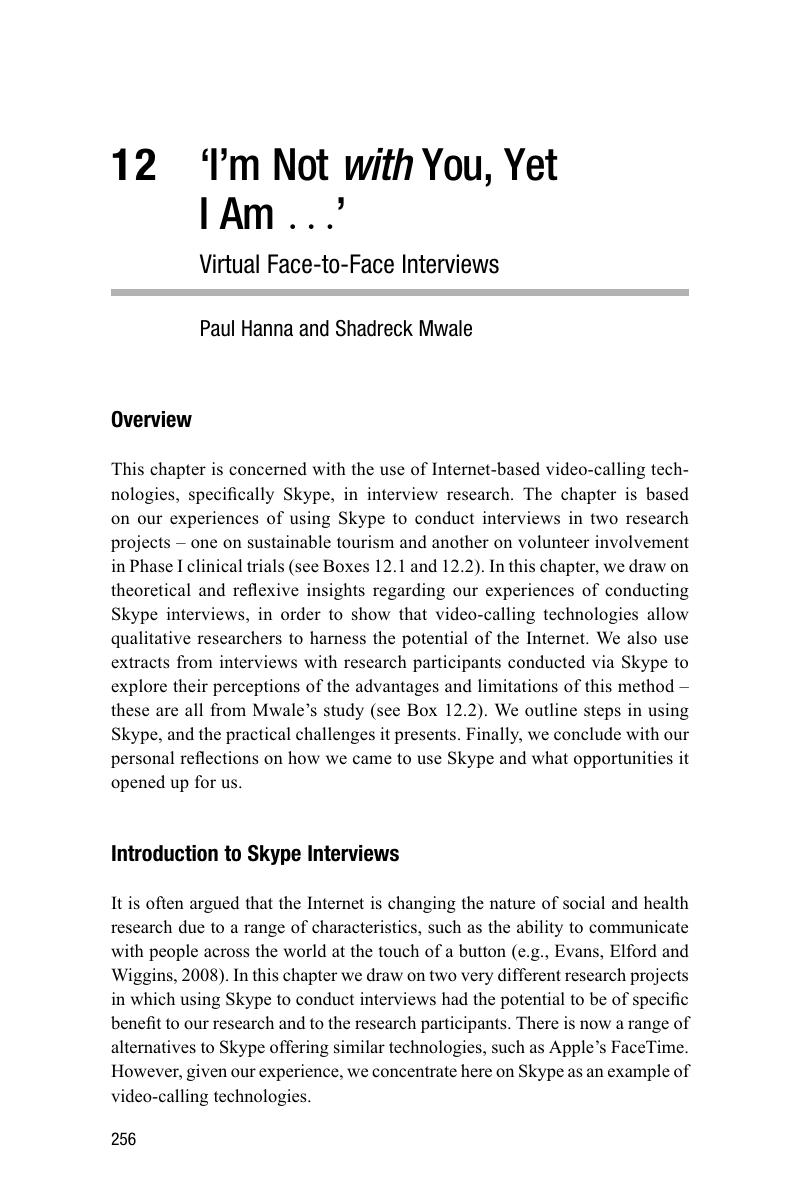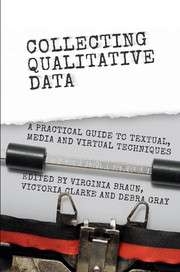Book contents
- Collecting Qualitative Data
- Collecting Qualitative Data
- Copyright page
- Contents
- Figures, Tables and Boxes
- Acknowledgements
- Contributors
- Foreword
- 1 Collecting Textual, Media and Virtual Data in Qualitative Research
- Part I Textual Data Collection
- Part II Media Data Collection
- Part III Virtual Data Collection
- 10 ‘Type Me Your Answer’
- 11 A Productive Chat
- 12 ‘I’m Not with You, Yet I Am …’
- 13 Meeting in Virtual Spaces
- Afterword
- Glossary
- Index
- References
12 - ‘I’m Not with You, Yet I Am …’
Virtual Face-to-Face Interviews
from Part III - Virtual Data Collection
Published online by Cambridge University Press: 06 October 2017
- Collecting Qualitative Data
- Collecting Qualitative Data
- Copyright page
- Contents
- Figures, Tables and Boxes
- Acknowledgements
- Contributors
- Foreword
- 1 Collecting Textual, Media and Virtual Data in Qualitative Research
- Part I Textual Data Collection
- Part II Media Data Collection
- Part III Virtual Data Collection
- 10 ‘Type Me Your Answer’
- 11 A Productive Chat
- 12 ‘I’m Not with You, Yet I Am …’
- 13 Meeting in Virtual Spaces
- Afterword
- Glossary
- Index
- References
Summary

- Type
- Chapter
- Information
- Collecting Qualitative DataA Practical Guide to Textual, Media and Virtual Techniques, pp. 235 - 255Publisher: Cambridge University PressPrint publication year: 2017
References
Further Resources: Online
Skype: www.skype.com/en/
Further Resources: Readings
References
- 16
- Cited by



